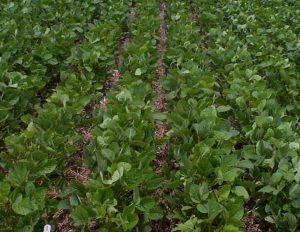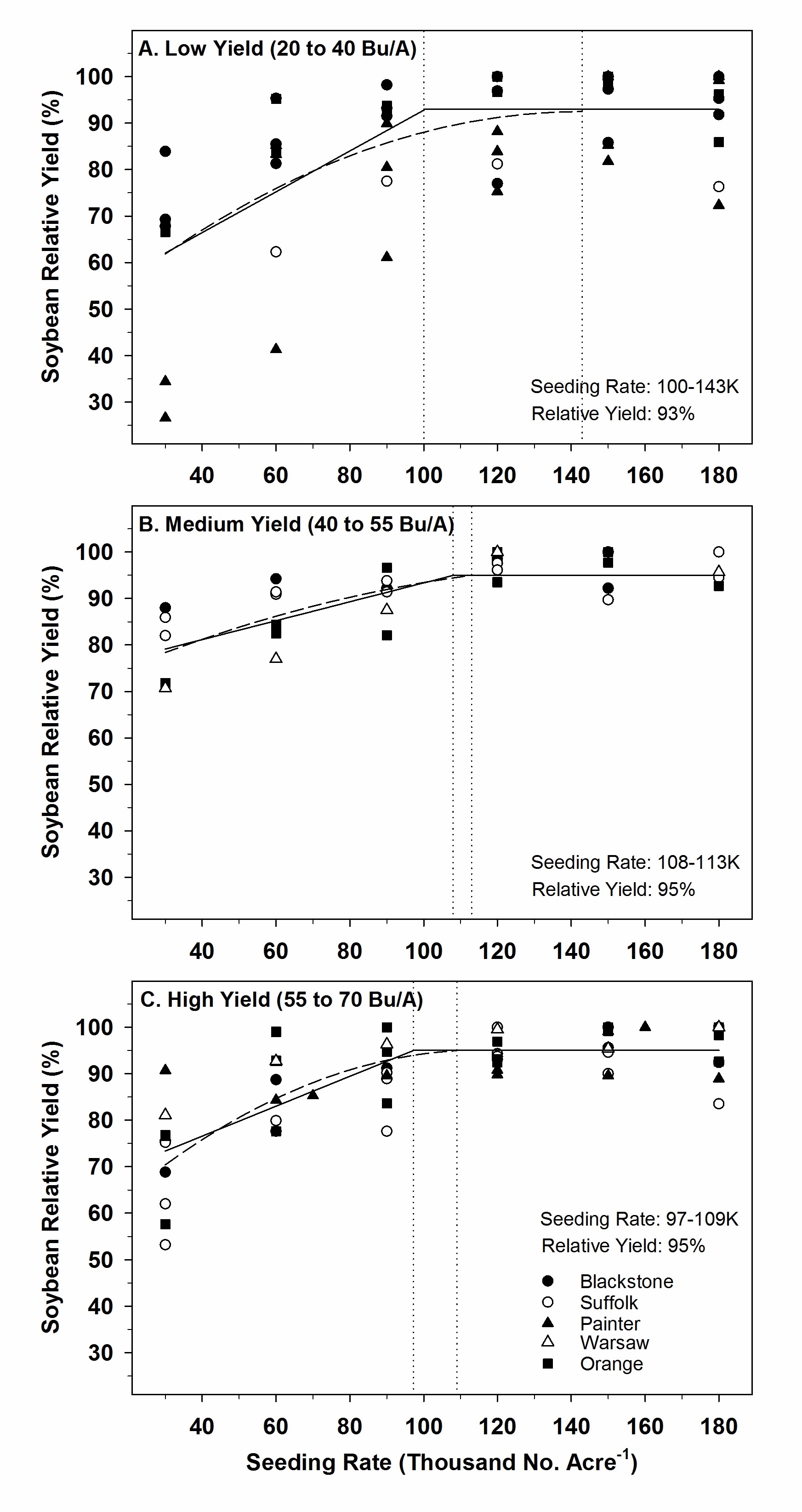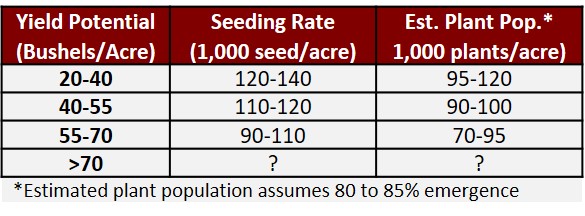Due to the rainy weather over the past two weeks, we are still planting full-season soybean in some areas. In addition, it appears that wheat harvest is not far off (some wheat at the Tidewater AREC was at 23% moisture today!). So, should we be increasing our seeding rates?
In general, yes. But, big increases probably will not be needed until late-June. Below are some seeding rate data that we collected from soybean 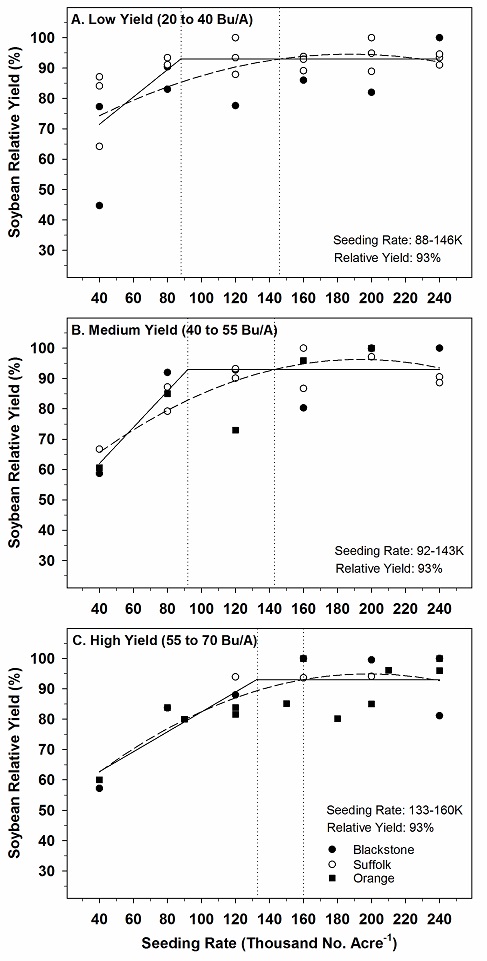 planted in early-June after barley. First, we don’t have a lot of data of soybean grown after barley, so I don’t have as much confidence in the exact seeding rate needed. Note that there is a wide range in the optimal seeding rates, illustrated by the area between the dotted lines in the graph. Although, these data may not directly apply to full-season soybean (no small grain), it should be close.
planted in early-June after barley. First, we don’t have a lot of data of soybean grown after barley, so I don’t have as much confidence in the exact seeding rate needed. Note that there is a wide range in the optimal seeding rates, illustrated by the area between the dotted lines in the graph. Although, these data may not directly apply to full-season soybean (no small grain), it should be close.
I think that we should now be using 120,000 to 160,000 seed/acre. The range will depend on the planting date. In general, I’d suggest bumping up your seeding by 20-30,000 seed/acre per week through June.
If you remember the seeding rate data that I shared in this blog last month for May-planted soybean (see Soybean Seeding Rates – How Low Can We Go?), I stated that maximum yields could be obtained with only 95,000 to 110,000 seed/acre when the yield potential is greater than 40 bushels/acre. That’s pretty low, but was adequate for maximum yield under good growth conditions. For less than 40 bushel potential, seeding rates needed to be a little higher. In the above graph, it appears that more seed is needed to obtain 55 to 70 bushels/acre after barley, I cannot fully explain why; therefore, I would assume that this response is primarily due to the location that we obtained the data (again, we don’t have a lot of data).
Once we get into mid- to late-June,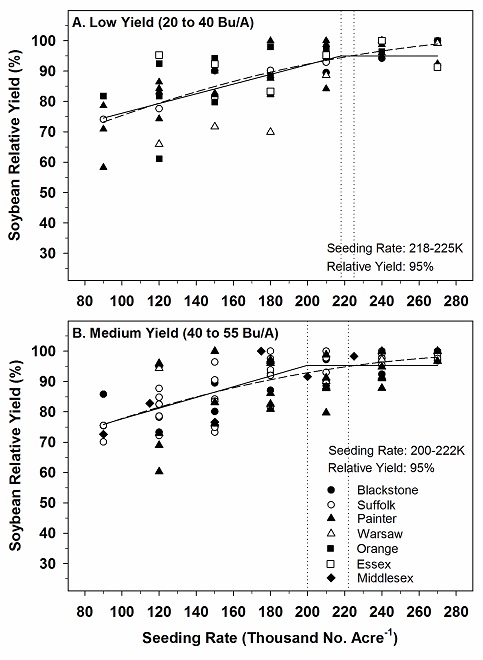 I’d rather see a seeding rate of 180,000 to 220,000 seed/acre, depending on planting date. This is based on the data to the right. You’ll notice that, like full-season soybean, the optimal seeding rate falls with greater yields. This is most likely due to greater leaf area with those high-yielding locations. As I’ve stated often, the seeding rate response can usually be traced back to whether or not the crop developed enough leaf area to capture 90-95% of the light by early pod development. Unfortunately, I don’t have any double-crop data planted following wheat with yields greater than 55 bushels/acre. I hope to solve that problem this year with new experiments.
I’d rather see a seeding rate of 180,000 to 220,000 seed/acre, depending on planting date. This is based on the data to the right. You’ll notice that, like full-season soybean, the optimal seeding rate falls with greater yields. This is most likely due to greater leaf area with those high-yielding locations. As I’ve stated often, the seeding rate response can usually be traced back to whether or not the crop developed enough leaf area to capture 90-95% of the light by early pod development. Unfortunately, I don’t have any double-crop data planted following wheat with yields greater than 55 bushels/acre. I hope to solve that problem this year with new experiments.

